Myrmicinae, Formicidae, Hymenoptera, Insecta, Arthropoda, Animalia
Additional images: worker dorsal view (large); worker petiole, lateral view (large).
Range
Costa Rica: Atlantic slope from sea level to 800m.
Identification
Basal margin of mandible flat, without a notch; face with at most a few short longitudinal rugae between frontal lobes and short rugae extending from mandibular insertions to about level of compound eye, never beyond; rest of face and promesonotum smooth and highly polished; propodeum shiny and polished like promesonotum, but with variably developed transverse rugae on dorsal face; legs black.
Similar species: Stenamma alas.
Natural History
Stenamma expolitum occurs in mature wet forest habitats. It is a specialist inhabitant of clay banks. Colonies are most readily encountered on nearly vertical banks along stream margins, but may also occur along trail edges where they have been cut into hillsides.
This and the related species S. alas have complex nesting behavior, reported in Longino (2005). The nest entrance is a turret of pebbles recessed in an alcove. There is one main nest chamber extending back into the bank from the entrance, and a smaller secondary chamber above the first and with entrance in the alcove above and behind the turret. Colonies maintain two or three nests in active condition but only occupy one. A door pebble is used to close the entrance to the main nest chamber when army ants are present. See the Stenamma alas page for details. Images below show examples of nest entrances.

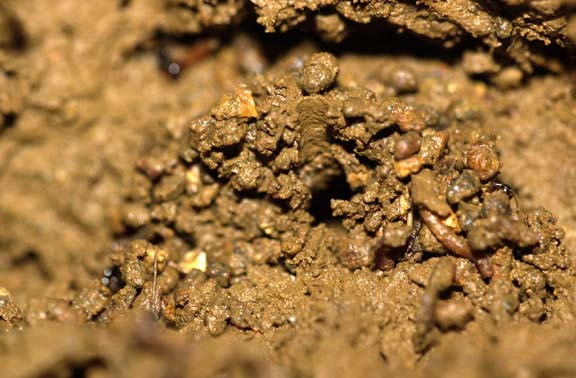
Cutaway of mound, showing vertically descending tunnel that curves horizontally into the bank.
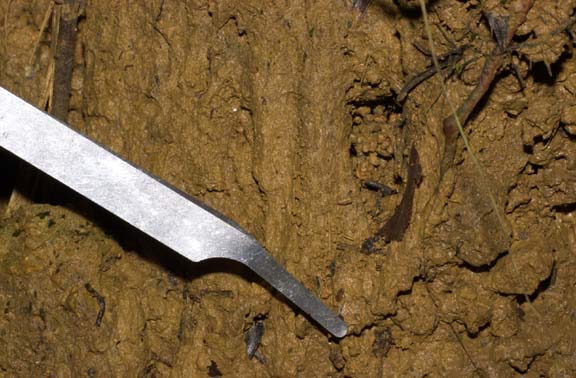
Typical turret in small alcove, showing forceps for scale.
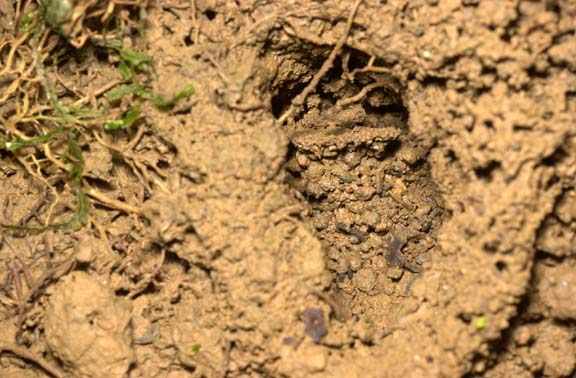
Example of a nest with clay disk surmounting pebble turret.
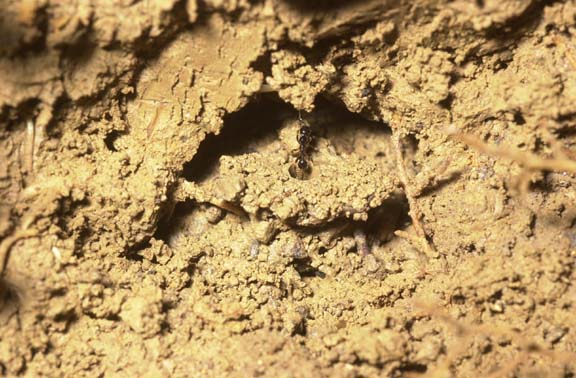
Note worker manipulating door pebble.

Example of nest with current excavation activity, showing ring of accreted soil around alcove.
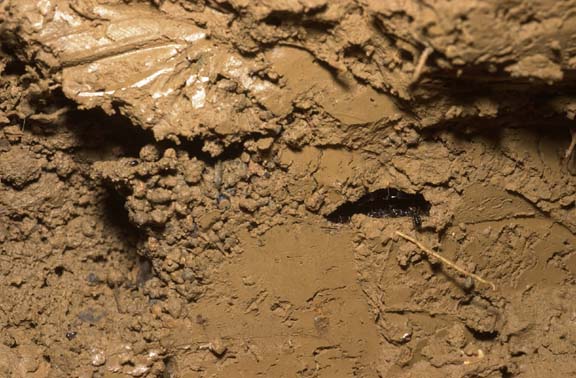
Cutaway showing saggital view of nest. Pebble turret is to the left; main chamber is partially exposed.
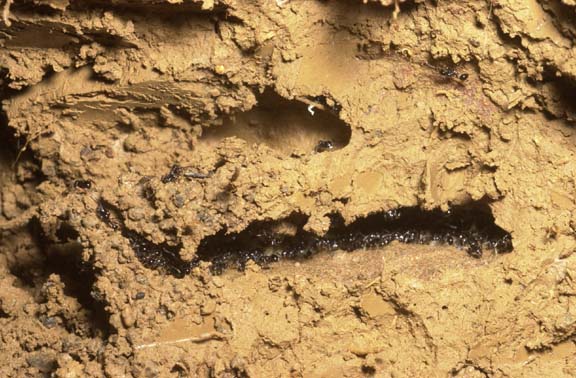
Same nest, fully exposed, showing tunnel descending from turret, entire main nest chamber, and upper secondary chamber.
Literature Cited
Longino, J. T. 2005. Complex nesting behavior by two neotropical species of the ant genus Stenamma (Hymenoptera: Formicidae). Biotropica 37:670-675.
Page author:
John T. Longino, The Evergreen State College, Olympia WA 98505 USA.longinoj@evergreen.edu